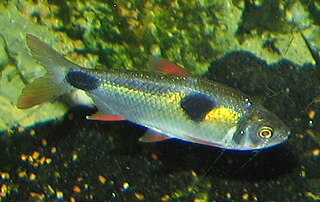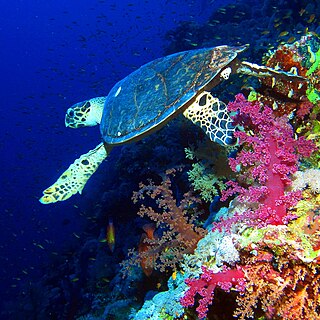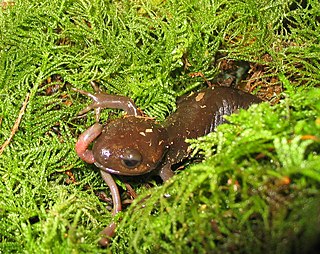 W
WA carnivore, meaning "meat eater", is an animal whose food and energy requirements derive solely from animal tissue or meat, whether through hunting or scavenging. Animals that depend solely on animal flesh for their nutrient requirements are called obligate carnivores while those that also consume non-animal food are called facultative carnivores. Omnivores also consume both animal and non-animal food, and, apart from the more general definition, there is no clearly defined ratio of plant to animal material that would distinguish a facultative carnivore from an omnivore. A carnivore at the top of the food chain, not preyed upon by other animals, is termed an apex predator.
 W
WAn avivore is a specialized predator of birds, with birds making up a large proportion of its diet. Such bird-eating animals come from a range of groups.
 W
WCannibalism is the act of consuming another individual of the same species as food. Cannibalism is a common ecological interaction in the animal kingdom and has been recorded in more than 1,500 species. Human cannibalism is well documented, both in ancient and in recent times.
 W
WCarnassials are paired upper and lower teeth modified in such a way as to allow enlarged and often self-sharpening edges to pass by each other in a shearing manner. This adaptation is found in the Order Carnivora, where the carnassials are the modified fourth upper premolar and the first lower molar, however this may vary in family. These teeth are also referred to as sectorial teeth.
 W
WCarnism is a concept used in discussions of humanity's relation to other animals, defined as a prevailing ideology in which people support the use and consumption of animal products, especially meat. Carnism is presented as a dominant belief system supported by a variety of defense mechanisms and mostly unchallenged assumptions. The term carnism was coined by social psychologist and author Melanie Joy in 2001 and popularized by her book Why We Love Dogs, Eat Pigs, and Wear Cows (2009).
 W
WEating live animals is the practice of humans eating animals that are still alive. It is a traditional practice in many East Asian food cultures. Animals may also be eaten alive for shock value. Eating live animals, or parts of live animals, may be unlawful in certain jurisdictions under animal cruelty laws. Religious prohibitions on the eating of live animals by humans are also present in various world religions.
 W
WThe feeding behaviour of Tyrannosaurus rex has been studied extensively. The well known attributes of T. rex are often interpreted to be indicative of either a predatory or scavenging lifestyle, and as such the biomechanics, feeding strategies and diet of Tyrannosaurus have been subject to much research and debate.
 W
WCarnivorous fungi or predaceous fungi are fungi that derive some or most of their nutrients from trapping and eating microscopic or other minute animals. More than 200 species have been described, belonging to the phyla Ascomycota, Mucoromycotina, and Basidiomycota. They usually live in soil and many species trap or stun nematodes, while others attack amoebae or collembola.
 W
WA hypercarnivore is an animal which has a diet that is more than 70% meat, with the difference consisting of non-animal foods such as fungi, fruits or other plant material. Some extant examples include crocodilians, owls, shrikes, eagles, vultures, felids, most wild canids, dolphins, snakes, spiders, scorpions, mantises, marlins, groupers, piranhas and most sharks. Every species in the family Felidae, including the domesticated cat, is a hypercarnivore in its natural state. Additionally, this term is also used in paleobiology to describe taxa of animals which have an increased slicing component of their dentition relative to the grinding component. Hypercarnivores per definition need not be apex predators. For example, salmon are exclusively carnivorous, yet they are prey at all stages of life for a variety of organisms.
 W
WA hypocarnivore is an animal that consumes less than 30% meat for its diet, the majority of which consists of non-animal foods that may include fungi, fruits, and other plant material. Examples of living hypocarnivores are the grizzly bear, black bear, binturong, and kinkajou.
 W
WAn insectivore is a carnivorous plant or animal that eats insects. An alternative term is entomophage, which also refers to the human practice of eating insects.
 W
WIntraguild predation, or IGP, is the killing and sometimes eating of a potential competitor of a different species. This interaction represents a combination of predation and competition, because both species rely on the same prey resources and also benefit from preying upon one another. Intraguild predation is common in nature and can be asymmetrical, in which one species feeds upon the other, or symmetrical, in which both species prey upon each other. Because the dominant intraguild predator gains the dual benefits of feeding and eliminating a potential competitor, IGP interactions can have considerable effects on the structure of ecological communities.
 W
WLepidophagy is a specialised feeding behaviour in fish that involves eating of scales of other fish. Lepidophagy is widespread, having been independently evolved in at least five freshwater families and seven marine families. A related feeding behavior is pterygophagy, which are fish that feed on the fins of other fish.
 W
WMatriphagy is the consumption of the mother by her offspring. The behavior generally takes place within the first few weeks of life and has been documented in some species of insects, nematode worms, pseudoscorpions, and other arachnids as well as in caecilian amphibians.
 W
WA mesocarnivore is an animal whose diet consists of 50–70% meat with the balance consisting of non-vertebrate foods which may include insects, fungi, fruits, other plant material and any food that is available to them. Mesocarnivores are from a large family group of mammalian carnivores and vary from small to medium sized, which are less than fifteen kilograms. Mesocarnivores are seen today among the Canidae, Viverridae (civets), Mustelidae, Procyonidae, Mephitidae (skunks), and Herpestidae. The red fox is also the most common of the mesocarnivores in Europe and has a high population density in the areas they reside.
 W
WMyrmecophagy is a feeding behavior defined by the consumption of termites or ants, particularly as pertaining to those animal species whose diets are largely or exclusively composed of said insect types. Literally, myrmecophagy means "ant eating" rather than "termite eating". However, the two habits often overlap, as both of these eusocial insect types often live in large, densely populated nests requiring similar adaptations in the animal species that exploit them.
 W
WOphiophagy is a specialized form of feeding or alimentary behavior of animals which hunt and eat snakes. There are ophiophagous mammals, birds, lizards, and even other snakes, such as the Central and South American mussuranas and the North American common kingsnake. The genus of the venomous king cobra is named for this habit.
 W
WPaedophagy in its general form is the feeding behaviour of fish or other animals whose diet is partially, or primarily the eggs or larvae of other animals. However, P. H. Greenwood, who was the first to describe paedophagia, defines it to be a feeding behaviour evolved among cichlid fishes.
 W
WA piscivore is a carnivorous animal that eats primarily fish. Piscivorous is equivalent to the Greek-derived word ichthyophagous. Fish were the diet of early tetrapods (amphibians); insectivory came next, then in time, reptiles added herbivory.
 W
WProtein poisoning refers to a hypothesized acute form of malnutrition caused by a diet deficient in fat, where almost all calories consumed come from lean meat. The concept is discussed in the context of paleoanthropologial investigations into the diet of ancient humans, especially during the last glacial maximum and at high latitudes.
 W
WA spongivore is an animal anatomically and physiologically adapted to eating animals of the phylum Porifera, commonly called sea sponges, for the main component of its diet. As a result of their diet, spongivore animals like the hawksbill turtle have developed sharp, narrow bird-like beak that allows them to reach within crevices on the reef to obtain sponges.
 W
WVermivore is a zoological term for animals that eat worms. Animals with such a diet are known to be vermivorous. Some definitions are less exclusive with respect to the diet, but limit the definition to particular animals, e.g. "Feeding on worms or insect vermin. Used of a bird."